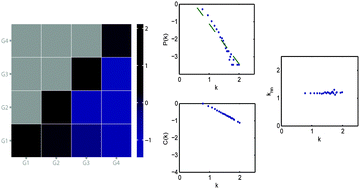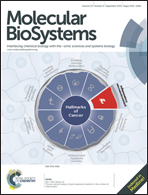Network simulation reveals significant contribution of network motifs to the age-dependency of yeast protein–protein interaction networks†
Abstract
Advances in proteomic technologies combined with sophisticated computing and modeling methods have generated an unprecedented amount of high-throughput data for system-scale analysis. As a result, the study of protein–protein interaction (PPI) networks has garnered much attention in recent years. One of the most fundamental problems in studying PPI networks is to understand how their architecture originated and evolved to their current state. By investigating how proteins of different ages are connected in the yeast PPI networks, one can deduce their expansion procedure in evolution and how the ancient primitive network expanded and evolved. Studies have shown that proteins are often connected to other proteins of a similar age, suggesting a high degree of age preference between interacting proteins. Though several theories have been proposed to explain this phenomenon, none of them considered protein-clusters as a contributing factor. Here we first investigate the age-dependency of the proteins from the perspective of network motifs. Our analysis confirms that proteins of the same age groups tend to form interacting network motifs; furthermore, those proteins within motifs tend to be within protein complexes and the interactions among them largely contribute to the observed age preference in the yeast PPI networks. In light of these results, we describe a new modeling approach, based on “network motifs”, whereby topologically connected protein clusters in the network are treated as single evolutionary units. Instead of modeling single proteins, our approach models the connections and evolutionary relationships of multiple related protein clusters or “network motifs” that are collectively integrated into an existing PPI network. Through simulation studies, we found that the “network motif” modeling approach can capture yeast PPI network properties better than if individual proteins were considered to be the simplest evolutionary units. Our approach provides a fresh perspective on modeling the evolution of yeast PPI networks, specifically that PPI networks may have a much higher age-dependency of interaction density than had been previously envisioned.


 Please wait while we load your content...
Please wait while we load your content...